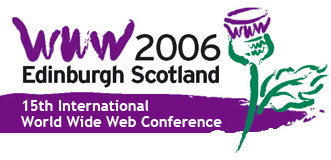

|
|
The Web Structure of E-Government - Developing a Methodology for Quantitative Evaluation
Track: E* Applications: E-Communities, E-Learning, E-Commerce, E-Science, E-Government, and E-Humanities Slot: 16:00-17:30, Friday 26th May In this paper we describe preliminary work that examines whether statistical properties of the structure of websites can be an informative measure of their quality. We aim to develop a new method for evaluating e-government. E-government websites are evaluated regularly by consulting companies, international organizations and academic researchers using a variety of subjective measures. We aim to improve on these evaluations using a range of techniques from webmetric and social network analysis. To pilot our methodology, we examine the structure of government audit office sites in Canada, the USA, the UK, New Zealand and the Czech Republic. We report experimental values for a variety of characteristics, including the connected components, the average distance between nodes, the distribution of paths lengths, and the indegree and outdegree. These measures are expected to correlate with (i) the navigability of a website and (ii) with its "nodality" which is a combination of hubness and authority. Comparison of websites based on these characteristics raised a number of issues, related to the proportion of non-hyperlinked content (e.g. pdf and doc files) within a site, and both the very significant differences in the size of the websites and their respective national populations. Methods to account for these issues are proposed and discussed. There appears to be some correlation between the values measured and the league tables reported in the literature. However, this multi-dimensional analysis provides a richer source of evaluative techniques than previous work. Our analysis indicates that the US and Canada provide better navigability, much better than the UK; however, the UK site is shown to have the strongest "nodality" on the Web. |
Platinum SponsorsSponsor of The CIO Dinner |
 |